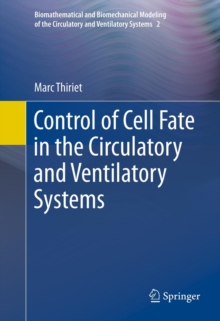
Signaling at the Cell Surface in the Circulatory and Ventilatory Systems PDF
by Marc Thiriet
Part of the Biomathematical and Biomechanical Modeling of the Circulatory and Ventilatory Systems series
Description
The volumes in this authoritative series present a multidisciplinary approach to modeling and simulation of flows in the cardiovascular and ventilatory systems, especially multiscale modeling and coupled simulations. The cardiovascular and respiratory systems are tightly coupled, as their primary function is to supply oxygen to and remove carbon dioxide from the body's cells. Because physiological conduits have deformable and reactive walls, macroscopic flow behavior and prediction must be coupled to nano- and microscopic events in a corrector scheme of regulated mechanisms when the vessel lumen caliber varies markedly. Therefore, investigation of flows of blood and air in physiological conduits requires an understanding of the biology, chemistry, and physics of these systems together with the mathematical tools to describe their functioning.
Volume 3 is devoted to the set of mediators of the cell surface, especially ion and molecular carriers and catalytic receptors that, once liganded and activated, initiate signal transduction pathways. Intracellular cascades of chemical reactions trigger the release of substances stored in cellular organelles and/or gene transcription and protein synthesis. Primary mediators are included in models of regulated cellular processes, but multiple secondary signaling components are discarded to allow simple, representative modeling and to manage their inverse problems.
Information
-
Download - Immediately Available
- Format:PDF
- Publisher:Springer New York
- Publication Date:14/12/2011
- Category:
- ISBN:9781461419914
Other Formats
- Paperback / softback from £129.99
- Hardback from £129.45
Information
-
Download - Immediately Available
- Format:PDF
- Publisher:Springer New York
- Publication Date:14/12/2011
- Category:
- ISBN:9781461419914










